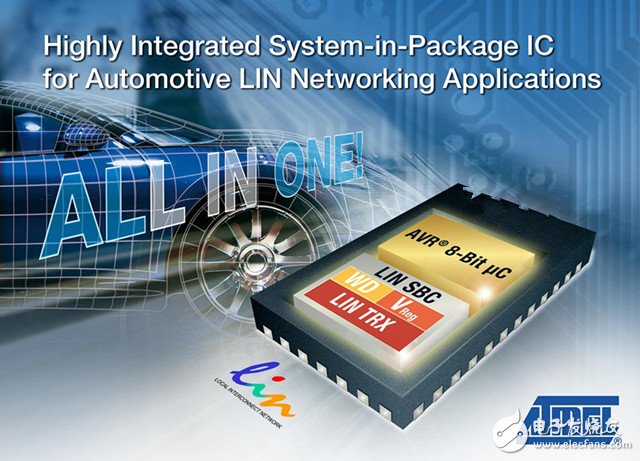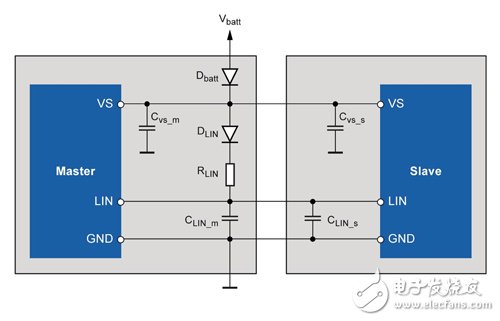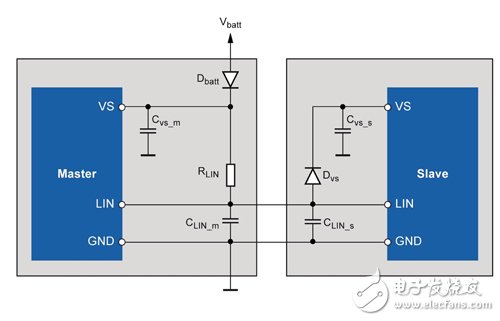Today, cars often contain hundreds of sensors, primarily for measuring and reporting parameters such as temperature and pressure. In most cases, these sensors are located in the vehicle, away from the host microcontroller (Host MCU) that monitors and processes the sensor data. Consider the cost of networking wiring for vehicles that are not directly connected to the Controller Area Network (CAN) or Regional Internet Road (LIN). The way to overcome this wiring limitation is to convert the standard three-wire LIN network into a two-wire configuration, where the LIN Slave Node takes power directly from the LIN bus main communication line, thereby eliminating each slave node. Go to the battery's power line.

A standard LIN bus includes a master node and no more than fifteen slave nodes connected to a single network. The physical LIN network is a three-wire configuration that includes a power supply (vehicle battery), grounding, and a LIN bus communication line. A 1kΩ pull-up resistor RLIN is typically required on the main LIN bus. In normal LIN bus operation, this pull-up resistor provides a bias in the LIN bus for the slave node on the LIN network, but does not provide power. The power of the node is from the battery input (Figure 1).

Figure 1 Standard three-wire LIN configuration
Designers can use a non-standard LIN network architecture that is simplified to two lines. This method relies on the connected slave nodes to draw power directly from the slave LIN bus, eliminating the need for an independent power supply line from the end node to the battery (Figure 2 ).

Figure 2 Suggested two-line LIN configuration
Since the battery supply line is omitted, only one blocking diode, VDS and snubber capacitor CVS_S are needed to supply power from the end node. The snubber capacitor should be sufficient to maintain the supply voltage from the end node during the transmission of the LIN packet and push the LIN signal to ground periodically. This paper outlines an implementation of this two-wire wiring approach and identifies the inherent system trade-offs that must be considered to fully implement the functionality of a two-wire LIN network.
Lithium Polymer Charger,36V Lithium Battery Charger,36V Bike Lithium Battery Charger,36V Bicycle Lithium Battery Charger
Changxing Deli Technology Co., Ltd. , https://www.delipowers.com
